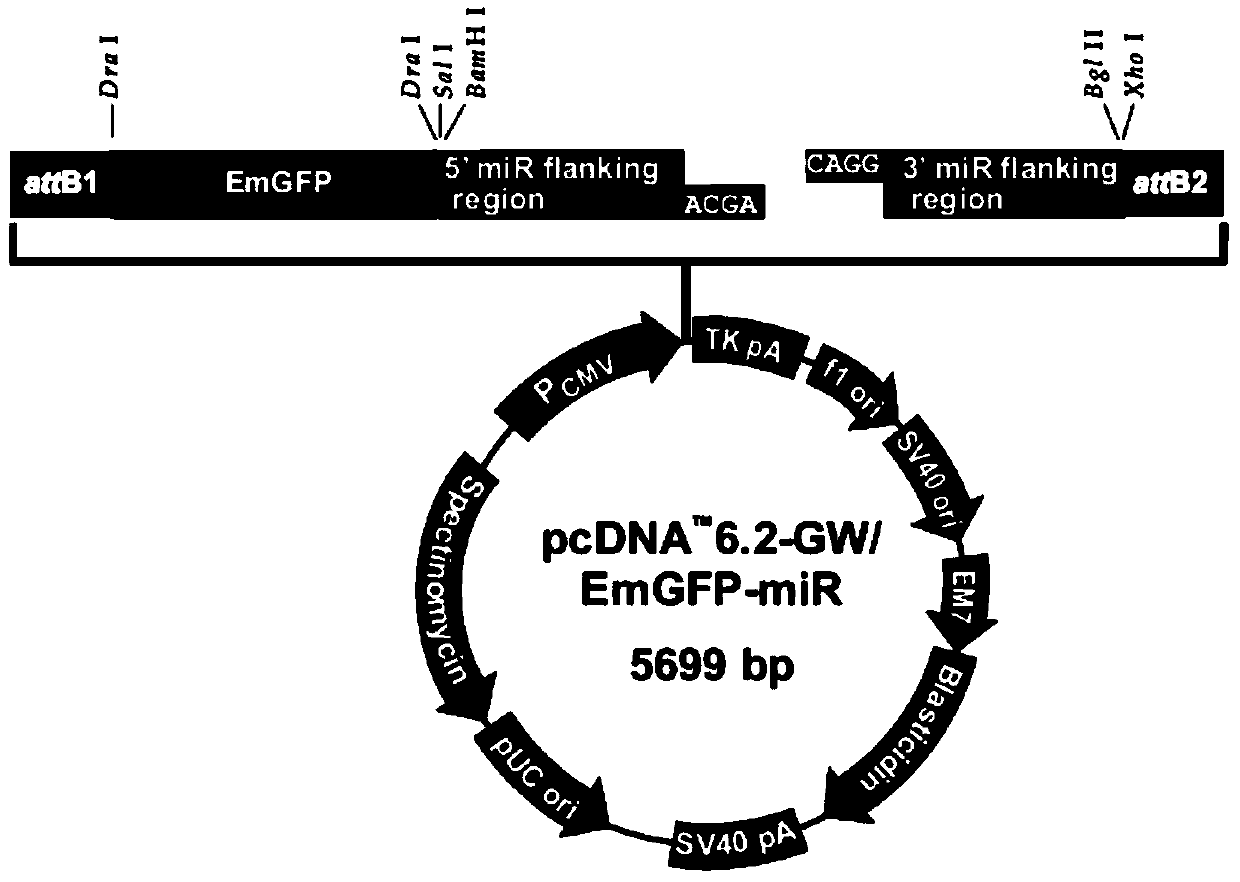J avian leukosis virus subgroup env gene conserved sequence-based siRNA (Small Interfering RNA (Ribonucleic Acid)) recombinant interference carrier as well as preparation method and application thereof
A technology of avian leukosis virus and interference carrier, which is applied in the field of genetic engineering and can solve problems such as changes
- Summary
- Abstract
- Description
- Claims
- Application Information
AI Technical Summary
Problems solved by technology
Method used
Image
Examples
Embodiment 1
[0037] The preparation of embodiment 1 double-stranded DNA
[0038] Target the conserved region of the env gene, the start site is 6146, the end site is 6165, design and synthesize siRNA, its base sequence is GTACAGCGATGGAATTATT, and its gene sequence is shown in the sequence table SEQ ID NO: 1;
[0039] Design and synthesize the hairpin structure containing the above-mentioned target fragment, wherein the gene sequence of the top strand DNA is shown in the sequence table SEQ ID NO: 2; and the gene sequence of the corresponding bottom strand DNA is shown in the sequence table SEQ ID NO: 3 ; with ddH 2 O was dissolved to 100 μM, 5-10 μl of each complementary single strand was mixed in pairs, and annealed according to the system given in Table 1. The mixture was heated at 95°C for 5-10 minutes, then left at room temperature for 20 minutes to form double-stranded DNA.
[0040] Table 1. oligo DNA annealing system
[0041] 100μM top strand oligo
Embodiment 2
[0042] The construction of embodiment 2 recombinant interference vector:
[0043] The annealed double-stranded DNA was treated with sterile ddH 2 O was further diluted to a concentration of 10 nM, and the system was connected at room temperature for 30-45 minutes according to Table 3.
[0044] Table 2. Enzyme Ligation System
[0045] 5×ligation buffer
Embodiment 3
[0046] Embodiment 3 conversion test
[0047] Take 10 μl of the ligation product to transform 100 μl of competent cells DH5α, spread on LB plates (containing 50 μg / ml spectinomycin), and incubate at 37°C.
[0048] Pick 3 clones from the transformation plate, shake the bacteria to extract the plasmid, and then sequence it to verify whether the sequence of the inserted fragment in the recombinant clone is consistent with the designed oligomeric single-stranded DNA, that is, the sequence of top strand DNA and bottom strand DNA;
[0049] The recombinant vector obtained by cloning was sent to a sequencing company for sequencing. It was found that the recombinant vector was obtained by the present invention. The sequence of the inserted fragment in the recombinant clone was consistent with the designed oligomeric single-stranded DNA sequence. It can be seen that the target fragment has been successfully inserted into the cloning vector. .
PUM
 Login to View More
Login to View More Abstract
Description
Claims
Application Information
 Login to View More
Login to View More - R&D
- Intellectual Property
- Life Sciences
- Materials
- Tech Scout
- Unparalleled Data Quality
- Higher Quality Content
- 60% Fewer Hallucinations
Browse by: Latest US Patents, China's latest patents, Technical Efficacy Thesaurus, Application Domain, Technology Topic, Popular Technical Reports.
© 2025 PatSnap. All rights reserved.Legal|Privacy policy|Modern Slavery Act Transparency Statement|Sitemap|About US| Contact US: help@patsnap.com



